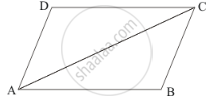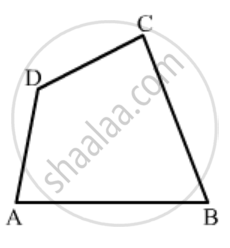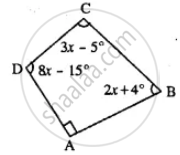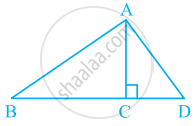Advertisements
Advertisements
Question
Complete the following statement by means of one of those given in brackets against each:
f consecutive sides of a parallelogram are equal, then it is necessarily a ..................
Options
kite
rhombus
square
Solution
If consecutive sides of a parallelogram are equal, then it is necessarily a rhombus.

We have ABCD, a parallelogram with AB = BC.
Since ABCD is a parallelogram.
Thus, AB = CD
And BC = AD
But, AB = BC
Therefore,all four sides of the parallelogram are equal, then it is a rhombus.
APPEARS IN
RELATED QUESTIONS
In a quadrilateral, define of the following Interior .
Complete of the following, so as to make a true statement:
The number of pairs of opposite angles of a quadrilateral is .......
In Fig. 16.19, ABCD is a quadrilateral.
Name a pair of adjacent sides.

If ABCD is a rectangle with ∠BAC = 32°, find the measure of ∠DBC.
Mark the correct alternative in each of the following:
The opposite sides of a quadrilateral have
Use the information given in the following figure to find :
(i) x
(ii) ∠B and ∠C

In quadrilateral PQRS, ∠P : ∠Q : ∠R : ∠S = 3 : 4 : 6 : 7.
Calculate each angle of the quadrilateral and then prove that PQ and SR are parallel to each other
(i) Is PS also parallel to QR?
(ii) Assign a special name to quadrilateral PQRS.
The angles of a pentagon are x°, (x - 10)°, (x + 20)°, (2x - 44)° and (2x - 70)°. Find the angles.
ΔPQR and ΔSQR are on the same base QR with P and S on opposite sides of line QR, such that area of ΔPQR is equal to the area of ΔSQR. Show that QR bisects PS.
Using the information given, name the right angles in part of figure:
AC ⊥ BD
